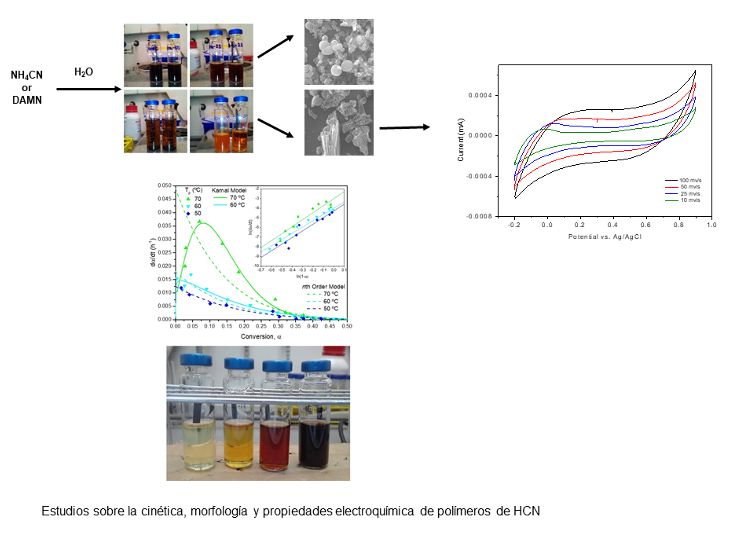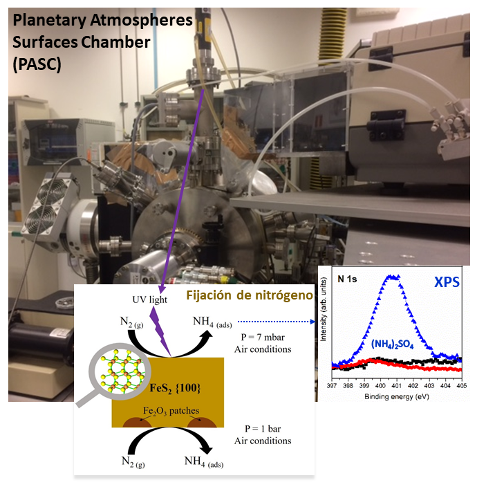Prebiotic Chemistry: CHIMOSS (ESP2017-89053-C2-2-P) is a coordinated project funded by the Plan Estatal de I+D+i 2017 ( State Programme for the Promotion of Scientific and Technical Research of Excellence, State Sub-programme for the Generation of Knowledge).
Period: 01/01/2018 – 31/12/2020
Principal investigators: Eva Mateo-Martí y Marta Ruiz-Bermejo
Other team members: María Paz Martín Redondo (CAB), José Luis de la Fuente Gómez (Propulsion Department, INTA)
The icy moons of the Solar System are astrobiological targets of different space missions under development (JUICE, Europa Clipper and Europa Lander). In this project, we propose to perform laboratory simulation experiments to help understand the physico-chemical processes that lead or may lead to the generation of complex organic chemistry on these moons.
The most widely accepted terrestrial analogue for interpreting the processes occurring on these moons are ocean-bottom hydrothermal systems, which have also been recognised as favourable environments for chemical evolution. Of particular interest is the identification of HCN in hydrothermal vents, as it has been proposed as a key molecule for the origin of a possible protometabolic system. However, the use of HCN, or its soluble salts such as NaCN or KCN or their iron complex salts, as starting reagents in hydrothermal chimney simulation experiments has been scarcely studied. Therefore, we propose to study the formation processes of organic molecules through hydrothermal synthesis, using cyanide salts as prebiotic reagents, and to characterise the organic/mineral surface interaction products under conditions of planetary environments.

Complementary to studies in planetary conditions in which the organic compound is adsorbed on the mineral surface from the gas phase, we propose to approach deep environments from adsorption from liquid media (chemisorption), which will provide a great knowledge and a link between prebiotic chemistry and subsurface ocean conditions. Chromatographic, spectroscopic and thermal analysis techniques (i.e. GC-MS, HPLC, FT-IR, NMR, TGA, DSC…) will be used to analyse the synthesis products. Additionally, it is proposed to study the interactions and reactivity of these organic compounds on surfaces, through the combination and complementarity of advanced surface analysis techniques such as: X-ray photoemission spectroscopy (XPS), RAMAN, infrared (RAIRS), programmed thermal desorption spectrometry (TPD) and electron diffraction (LEED).
Through our studies we aim to fill the knowledge gap between the systems (organic/surface and organic-liquid/surface) when studied separately, addressing new scientific challenges and innovative technological developments. We propose an approach using complementary techniques, studying the system in the context of real conditions, simulated within the Planetary Atmosphere and Surface Simulation Chamber (PASC); this will provide us with a unique understanding of the surface, its reactivity and chemical evolution in the planetary context of interest. Our goal is to achieve fundamental knowledge that will serve as a basis for the development of applied science; to move from experimental platforms for simulation studies in the laboratory, to the design, implementation and validation of space missions themselves.

Outreach articles
Ruiz-Bermejo, M. “Una pincelada azul en el lienzo del origen de la vida”. An. Quím. 2020, 116, 154-163.







